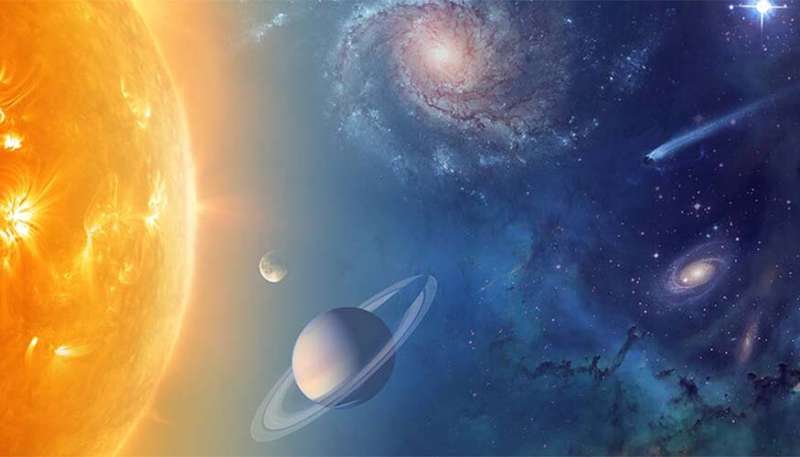The research appears in Earth and Planetary Science Letters.
"The significant reorganization of the early solar system due to giant planet migration has hampered our understanding of where planetary bodies formed," said Jan Render, LLNL postdoc and lead author of the paper. "And by looking at the makeup of meteorites from the asteroid belt, we were able to determine that their parent bodies must have accreted from materials from very different locations in the early solar system."
Even though the asteroid belt is only a relatively narrow band of the solar system, it contains an impressively diverse collection of materials. For example, multiple spectroscopically distinct asteroid families have been identified within the main belt, indicating vastly different chemical compositions. In addition, meteorites are known to derive from roughly 100 distinct parent bodies in the belt, with diverse chemical and isotopic signatures.
Tracing the source material of planetary bodies requires signatures that are established during planetary body accretion. Isotopic anomalies of nucleosynthetic origin represent powerful tools because these signatures fingerprint the actual building material from which these planetary bodies accreted.
"If we want to know what the solar system looked like at inception, we need a tool to reconstruct this primordial structure," said LLNL cosmochemist Greg Brennecka, co-author of the paper. "We've found a way to use isotopic signatures in meteorites to reconstruct what the solar system looked like when it was formed."
The team took samples of basaltic achondrites (stony meteorites similar to terrestrial basalts) to measure their nucleosynthetic isotope signatures in the elements neodymium (Nd) and zirconium (Zr). Their work showed that these elements are characterized by relative deficits in isotopes hosted by a certain type of presolar material. This data is well correlated with nucleosynthetic signatures observed in other elements, demonstrating that this presolar material was distributed as a gradient throughout the early solar system.
"By comparing these isotopic signatures with other proxies for solar system reconstruction, this links the original formation location of planetary bodies to their current positions," Render said. "These measurements help us create a reconstruction of the primordial solar system by 'cosmolocating' the accretion orbits of meteoritic parent bodies."
Explore further



